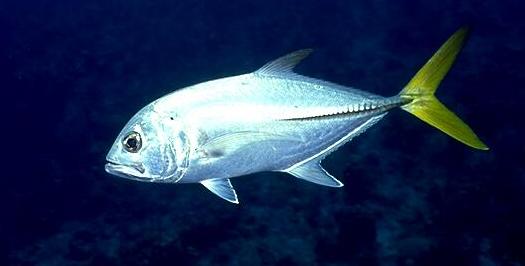
Caranx latus
Bigeye Jack
The horse-eye jack has a deep and compressed body similar to a jack crevalle, but the horse-eye jack’s head is more rounded. Known for its large eyes, the horse-eye is gray to bluish-black above and a silvery-white on its sides and below. A row of dark-colored scutes extends from the middle of the body to the center of the forked tail fin. In addition to the dark and light contrast on the overall body, the horse-eye jack’s tail fin is yellow, which is often highlighted in black on the top edges. The horse-eye can also be identified from other jacks by its chest, which is covered entirely in scales.
The horse-eye jack’s diet consists of fish, crabs and shrimp. Although individual fish will seek out crabs and other organisms on or near the bottom, most feeding takes place as schools of horse-eye encounter schools of small baitfish and shrimp.
The horse-eye jack can be found in the western Atlantic Ocean from New Jersey to Bermuda and from the northern Gulf of Mexico to Brazil.
Horse-eye jacks are mostly found in open water at a variety of offshore depths, but have been known to travel up coastal streams and rivers. Adults are found among reefs in open water, whereas younger horse-eye typically select sandy shores or muddy botto
The Horse Eye Jack is on average 1 to 2 1/2 feet long.
55 pounds , 12 ounces